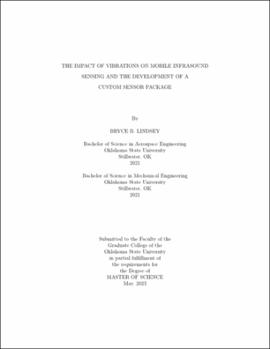| dc.description.abstract | Acoustic frequencies below 20 Hz, referred to as "infrasound", are emitted by various phenomena. Events such as volcanoes, tornadoes, earthquakes, industrial processes, detonations, and bolides, can be analyzed via the infrasound they produce. Researchers often use fixed-location sensors to observe correlations between infrasound signals and the location, strength, and behavior of these events. However, recent efforts to deploy infrasound sensors on-board a storm-chasing vehicle (targeting tornado-induced infrasound) have yielded unexpected results. Following an initial investigation, it was suspected that vibrations were responsible for abnormal spectral content observed while deployed on-board the vehicle. To explore the mitigation of vibrations on mobile infrasound acquisition, a custom seismo-acoustic sensor was constructed: the Cloud-capable Low-cost Acoustic and Seismic sensor Package (CLASP). CLASP consists of a pressure transducer mounted orthogonally to the dominant vibration vector component on common mobile platforms and utilizes an open source cloud-based storage protocol, both of which aim to optimize the sensor package for mobile infrasound measurements. Following its construction, data collected from both CLASP and a previously fielded sensor were compared during lab and field testing: acoustic and acceleration data was acquired while mounted to an unmanned aerial vehicle, automobile, and shaker table. Throughout controlled lab tests, the CLASP design helped decouple vibrations from the acoustic signals collected from the pressure transducer. However, field tests revealed that the primary contributor to seismo-acoustic coupling is static pressure oscillations due to changes in altitude as the package vibrates; a mechanism that is not mitigated by the CLASP design. Ultimately, CLASP and its source code, components, and methodology are presented in this work, as well as a summary of guidelines for infrasound data acquisition in vibrationally-active environments. | |
